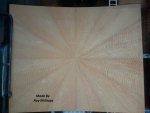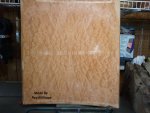Tom Wallace
Member
- Messages
- 15
- Location
- Exeter, CA
I've never used veneer. I've done a lot of refinishing, and finally am attempting to actually make my own projects. I just put up a 65" flat-screen on the wall and am going to build a floating Entertainment center. Nothing huge, just 54" long, 16" deep and 12" top to bottom. Anyway I discovered doing this out of solid wood isn't practical, so I'm going to attempt to use veneer. Anybody have any words of wisdom? Also what would be the best material to actually me this with that the veneer will adhere to best?
If any of those questions are stupid, again, rookie
If any of those questions are stupid, again, rookie






